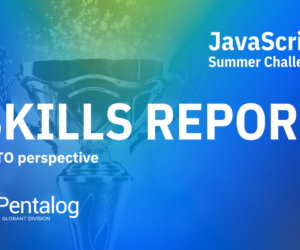After reading the French Institute of Public Opinion’s (IFOP) survey for the a French association of pharmacists (PHR) in January 2015, I hereby restate what Philippe Loudenot (civil servant in charge of information systems security for the French Ministries of Health and Social Affairs) said following the strategic innovation meetings organised by pbifrance on connected objects: the security of personal data depends on what we use it for. As far as health connected objects are concerned, we freely accept to send their information to manufacturers and then to “specialists” for more advice. Has anyone of us even read all general terms and conditions? Yes? And you are still using your health connected objects? This proves that privacy is only a matter of perception.We are permanently connected (mobile, geolocation, tracker, etc.) and implicitly find it more and more normal to carry connected objects that are continuously sending data on our health condition: according to a recent study, 3 out of 4 persons are ready to buy a health connected object and at least one of them already owns one. This need to know and monitor our health condition at every moment is pushing us to go a step further and share this personal data with “specialists” for their expert advice. I leave “specialists” between quotation marks since I really cannot certify that your friends and more generally your community are real health and well-being professionals able to offer you scientific advice.But let’s go back to health connected objects. According to the same study, here are the most popular objects of this kind:
- blood pressure meter (58%),
- glucose monitor (35%),
- sleep tracker (30%),
- thermometer (23%),
- spirometer measuring lung functions (21%).
We thus want our blood pressure, blood sugar level, quality of sleep, body temperature and lung function to be monitored in real time. At present, the quality of the measurements performed by the connected objects highly depends on their type: health or well-being. There are two big differences between a health connected object and a well-being connected object, namely the standards to be met and the accuracy/quality of measurements. In the case of the so-called health connected objects, their placing on the market is subject to all the Ministry of Health’s regulations and accreditations for health-related services and products. On the other hand, since well-being connected objects are not subject to these constraints, the quality of their measurements and results are not controlled.The collection of more or less accurate information later on allows:
- at least to display the collected information in a report, with the possibility of monitoring their evolution over time,
- at best to analyse them in order to offer you basic advice or comparisons with the user community using the same health connected object,
- and, (very) seldom, to transfer them to health or well-being professionals to offer you custom diagnostics for your health condition and help you improve it.
3% of the interviewed persons who bought a health connected object do not use it anymore, especially since 55% rarely use it and 31% are dissatisfied with the lack of advice and interpretation of the collected data.The services related to the collected data are being structured to meet our demands: receiving better advice and predictive diagnostics for our health condition. Beyond the monitoring of certain basic constants (size, weight, age, blood type, etc.), the health connected objects helps us monitor over time all the parameters that we accept to share, or, better said, that we are already sharingBasic data, such as your weight, size, age, blood type, is requested by most companies that provided you with health connected objects once you log in to the service for the first time. Your health condition can be thus found in the information stored somewhere on a server. From this point on, you are going to choose additional services in order for it to be analysed by professionals.What worries me is that the two closest health professionals, namely the medical doctor and pharmacist, cannot access this data yet although 50% of us think that it should be interpreted by the medical doctor (50%) in close collaboration with the pharmacist (37%). This being said, only 39% of us are ready to share it with our medical doctor and only 8% with the pharmacist. This is quite strange since 77% of the interviewed people (aged 18-24 years and those that already own a health connected object) are ready to share their connected object-related data with their pharmacist to obtain custom advice on their:
- current medical treatment (88%)
- basic information: size, weight, age, blood type… (75%)
- sleep related data (69%)
- appointment with health professionals (64%)
- physical activity related data: number of steps… (61%)
While more than one in two pharmacists say that connected objects are beneficial to patients, others have little or no confidence in the security of health data gathered by these objects. Can’t say I don’t agree with them especially in the case of well-being connected objects …The projects that we are currently developing show that the level of health connected objects and digital services related to the former ones will soon increase in order to respond to our fears and meet our expectations in terms of quality and security: encoding of data in the health connected object until recovery, possibility to anonymise part of this data, implementing exchange protocols to access other services, creating a data aggregation platform to centralise and secure data sharing…I am very eager to see an appointment in my calendar set up by my medical doctor following an alert related to the automatic analysis of the data gathered by my health connected objectsIf you have a project or simply want to take conception, implementation or your marketing strategy one step further, consult our prototyping offers and embedded system development on pentalog.com as well as our consulting offers on our site.











